What to Do When Onions Bolt
When we set out to grow onions for bulbs, we expect to harvest a collection of large, plump globes. And, if we have more than we need fresh, we hope to store them for months.
But what happens when your onion plants start developing a white tear-drop shaped tip at the top of the plant? Sadly, this is not what we want because this means the onion has bolted.
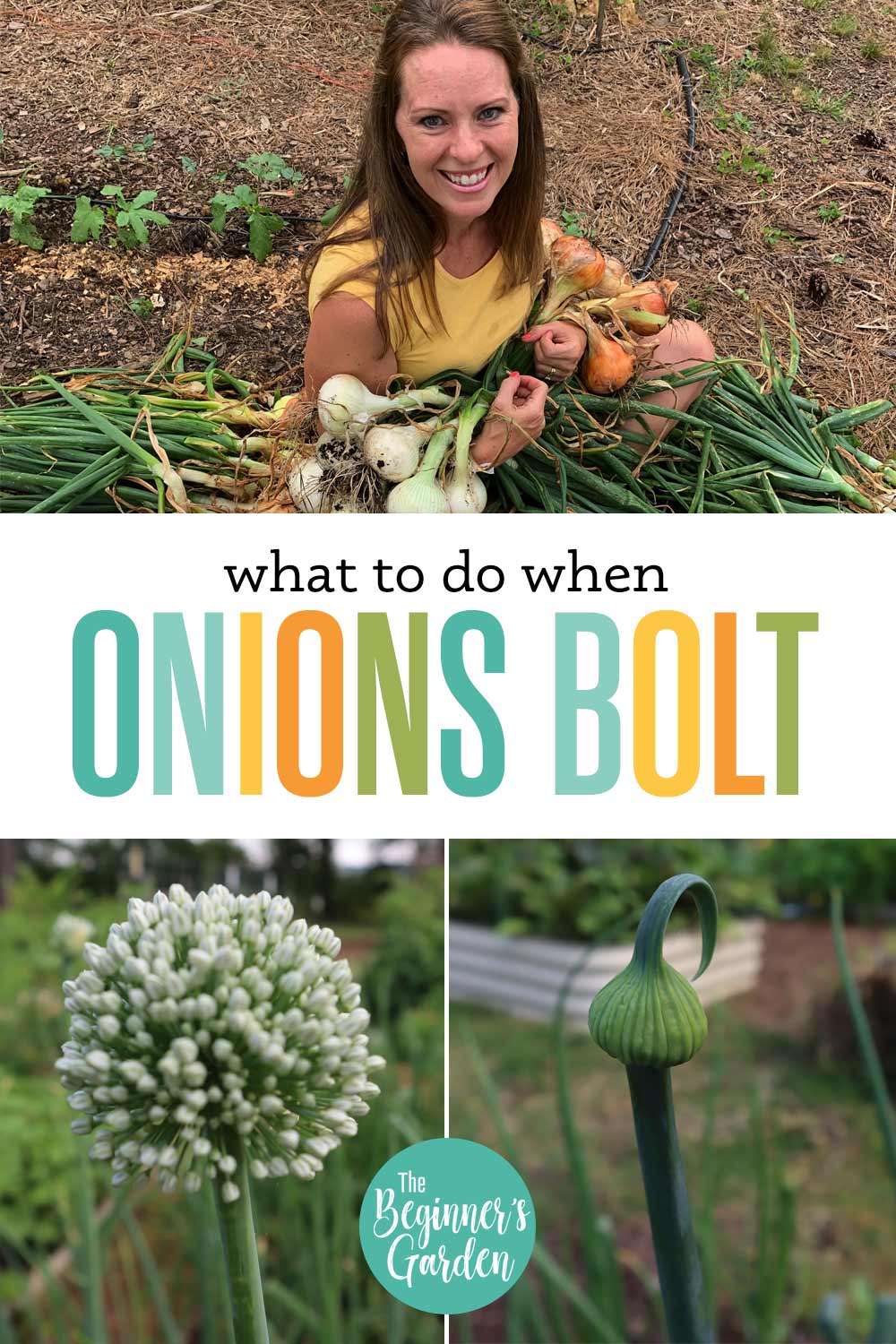
When an onion starts to bolt, that tear-drop tip will continue to grow taller than the other leaves. This stem is actually a young flower stalk. While the flower, if left alone, will attract pollinators to your garden, the onion bulb has stopped sizing up because the plant has shifted from bulb production to seed production. Not only that, but the onion has also lost its ability to store long-term.
While no onion grower wants to see this, you have options if it happens to you. There are also a few things you can do to prevent it from happening next year. Let’s talk about that.
Option 1: Let It Flower
If an onion starts to bolt, you can allow it to continue growing. When it first appears, it looks like a small bulb or scape on the top. As it continues to grow, it begins to flower. This is attractive to pollinators and makes for a great addition to an overall healthy garden.
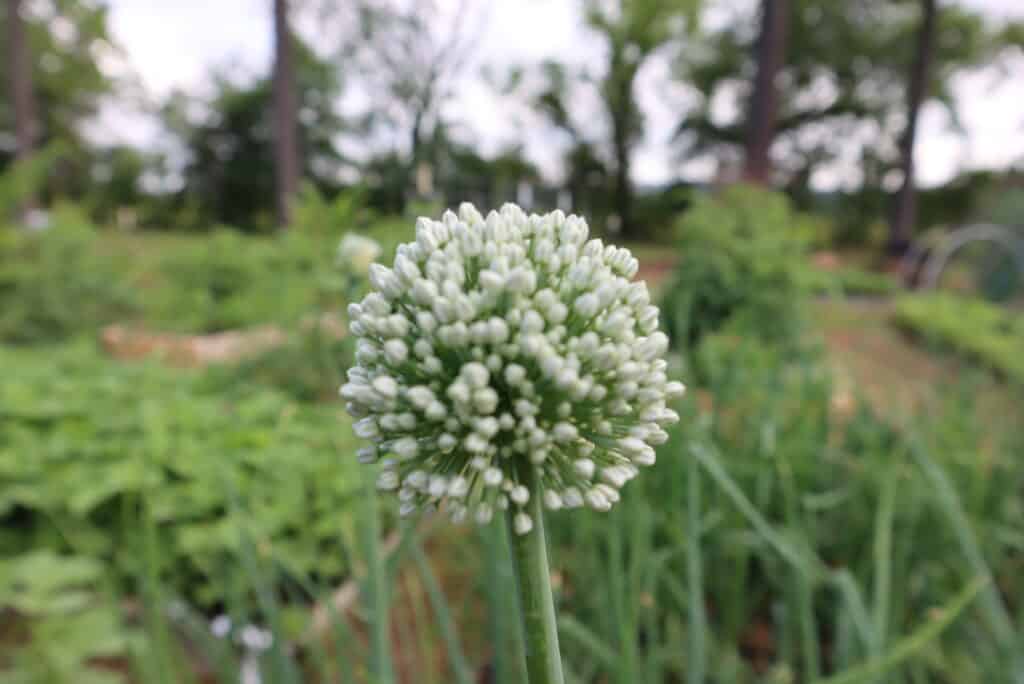
If you are growing an open pollinated variety and the varieties are separated by at least 800 feet from one another, you can let the flower develop its own seed and save seed from the plant. These seeds can be reused for next year’s crop.
But, if you’re like me, you aren’t growing onions for seed or for the pollinators (we have other plants that do that). In that case, the next two options may be more appealing.
Option 2: Pull the Plant Right Away
While the onion bulb won’t continue growing, what has developed to this point can still be used in your kitchen. Harvesting the plant now means you can use it right away.
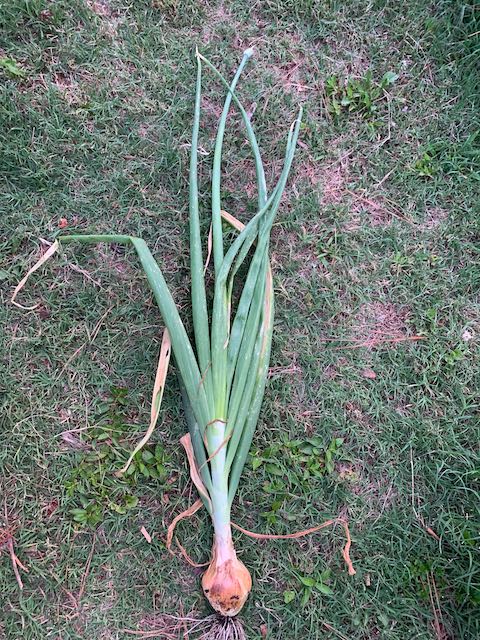
The bulb will not store for months like onions that have not bolted, so don’t bother trying to cure it for long-term storage. The reason why a bolted onion won’t store well is this: the flower stalk goes all the way down into the bulb and will be the first thing that rots. But, if you pull the bolted onion right away, it can be used when harvested. The longer you wait to harvest however, the more tough that flower stalk within the bulb will become — to the point of being unusable.
Hopefully you only have a few bolted onions in your patch, but If you have a lot of onions that are bolting at the same time, you can harvest them and preserve them right away. This is what I do. I’ll pull all of my bolted onions and I’ll chop them and either freeze or dehydrate them. In this way, I’m able to salvage those onions that can’t be stored, and I can use them all year in their preserved form. Bolted onions are perfect for this.
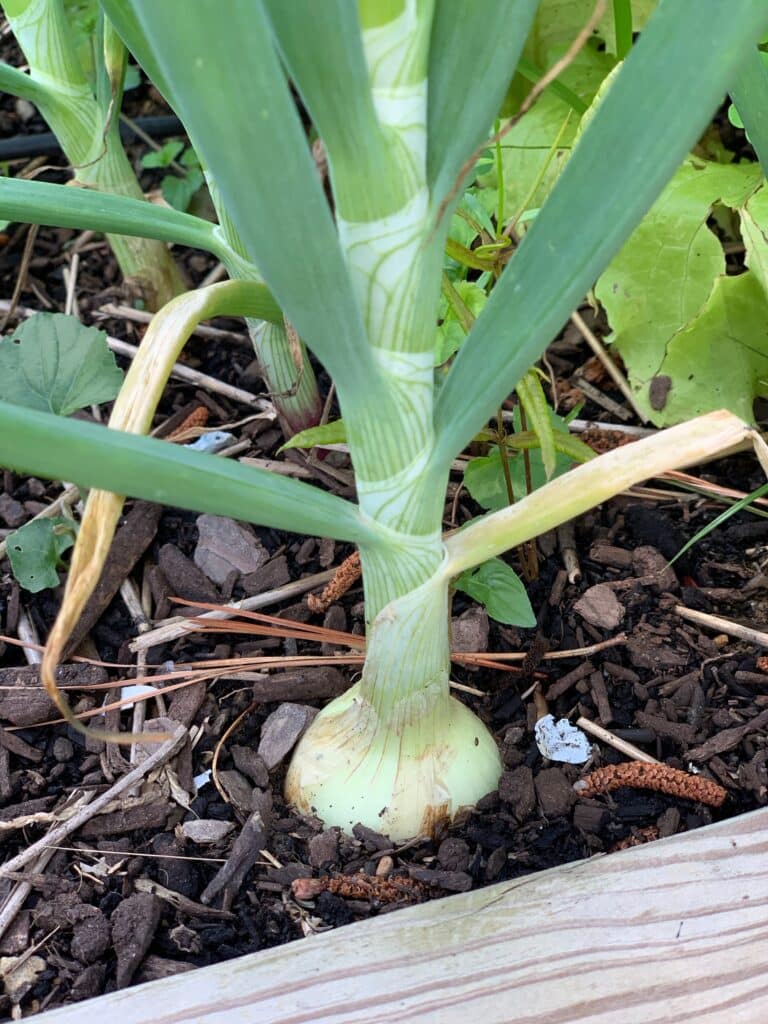
Option 3: Clip the Bolted Stem
Clipping the flower stalk off may buy you some time if you aren’t ready to use or preserve the bolted onions right away. While doing this won’t make the onion bulb grow bigger (it has already shifted from bulb to seed production, if you recall), it gives you some time to either use it in fresh cooking or decide if you want to preserve it. I would still pull these onions within a few days up to a week after clipping the stem.
Again, these onions won’t be good candidates for storage even if you think you caught it in time. If you were to store a bolted onion near other good onions that didn’t bolt, it could cause them to spoil and go bad.
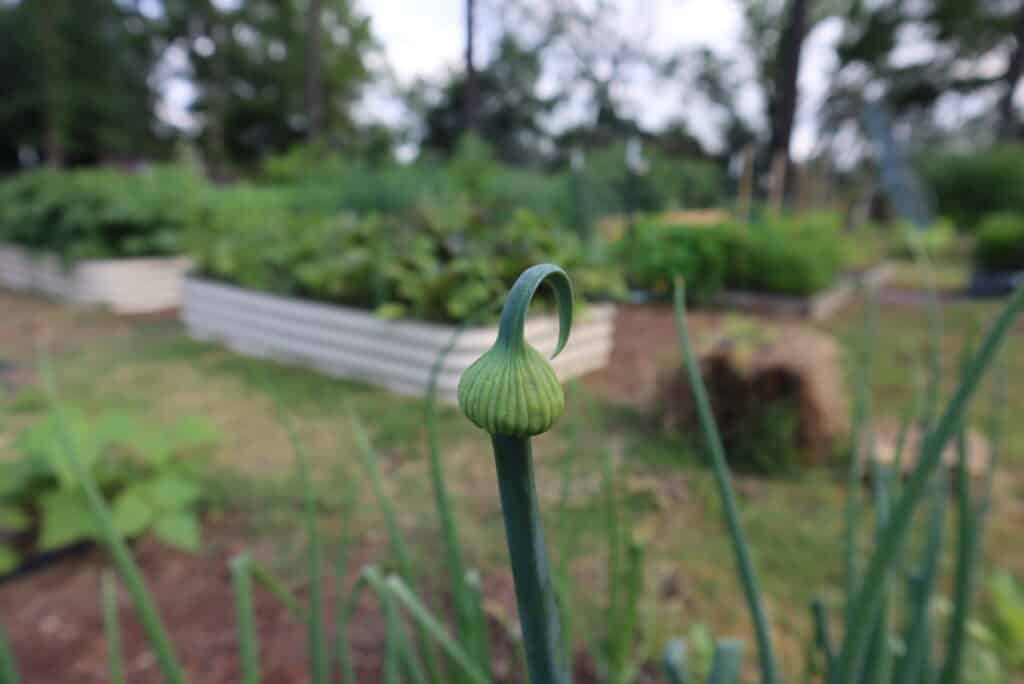
How to Avoid It For Next Season
In order to know how to prevent onions from bolting, let’s first talk about why it happens in the first place.
Onions bolt due to some sort of stress. There are several different reasons why that could happen but most of the time it is weather induced. Onions are a biennial plant meaning that normally, they would flower the second year in their life cycle. If they go through fluctuations in temperatures in one season where they endure hot and cold spells, that can make the plants think that they have already gone through two years and it is time to set seed. While you can’t prevent these weather changes, there are a couple things you can do to hopefully prevent the rate of bolting.
Test Different Varieties
First, you can plant different varieties and take note of the rate at which each one bolts. Some varieties will hold up to weather changes better than others so if you notice that one variety has fewer plants that bolted, plan to plant more of that variety next year.
I’ve noticed this year that my Red Creole variety has bolted more than Patterson or Candy onions. If you live in an area like mine where I can grow short day and intermediate day (more on choosing the appropriate day length onion here), try planting a mixture of both kinds. I have noticed that my intermediate day onions bolt less than short day. Again this all comes down to trial and error while taking note of what happens in your own garden.
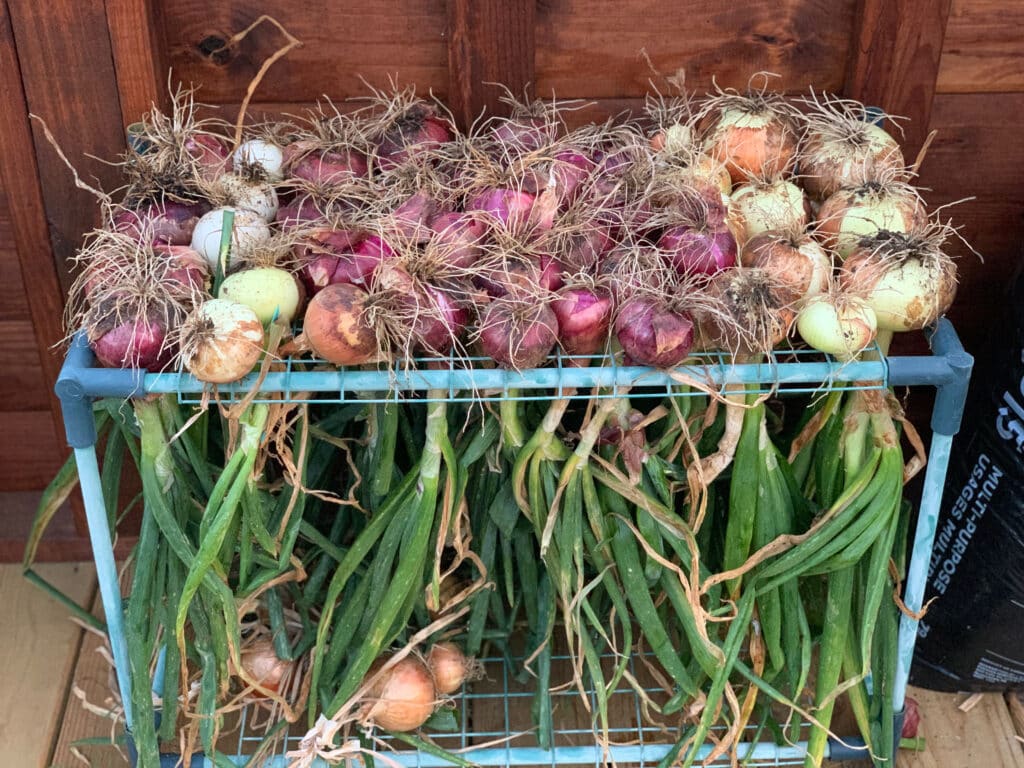
Compare Where You Grow Your Onions
Second, you can compare growing your onions in raised beds, ground beds and containers. This is a test to see if there is one growing condition that works better for you.
For example, the soil in raised beds is more sensitive to weather changes than ground beds. This may lead to soil temperature fluctuations that can be more significant than in the ground soil. On the other hand, if you get a lot of spring rain, planting onions in a saturated ground bed can lead to rotting of onion plants in the ground, whereas in raised beds the water drains better.
I share these examples to encourage you to do your own testing if you have an option to plant in raised beds, ground beds, or containers. One option may end up preventing bolting more than another.

Plant Onions from Seed
Another test you can do is plant onions from seed (which would need to be done ahead of time — earlier than you think). I try to start onion seeds in November for the next year’s harvest. You can then compare that to buying transplants. Most people find that planting sets (small onion bulbs) can lead to a higher bolting rate. Either way, testing this out for yourself can be a benefit to see what works in your garden.
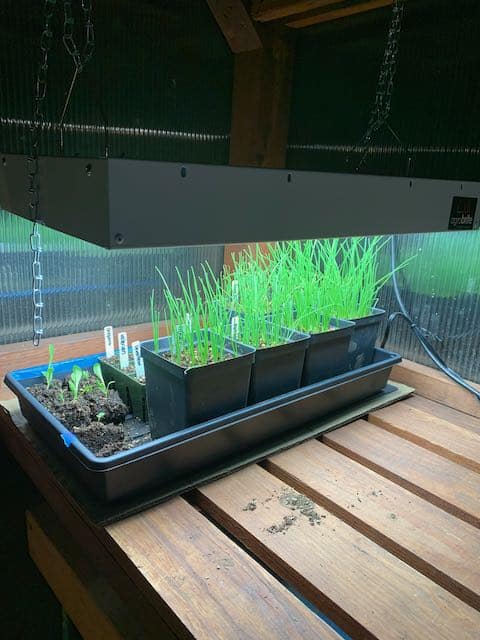
Try Varying Planting Time
Finally, you can test planting your onions at slightly different times. If you live in a warm climate, such as the deep South, you can try direct seeding your onion seeds into the ground in the fall for the next year. If that doesn’t apply to you or you can’t plant in the fall, you can always try to stagger your plantings in the late winter and early spring. Maybe planting a little later can get you through some of those temperature swings and not cause as many to bolt.
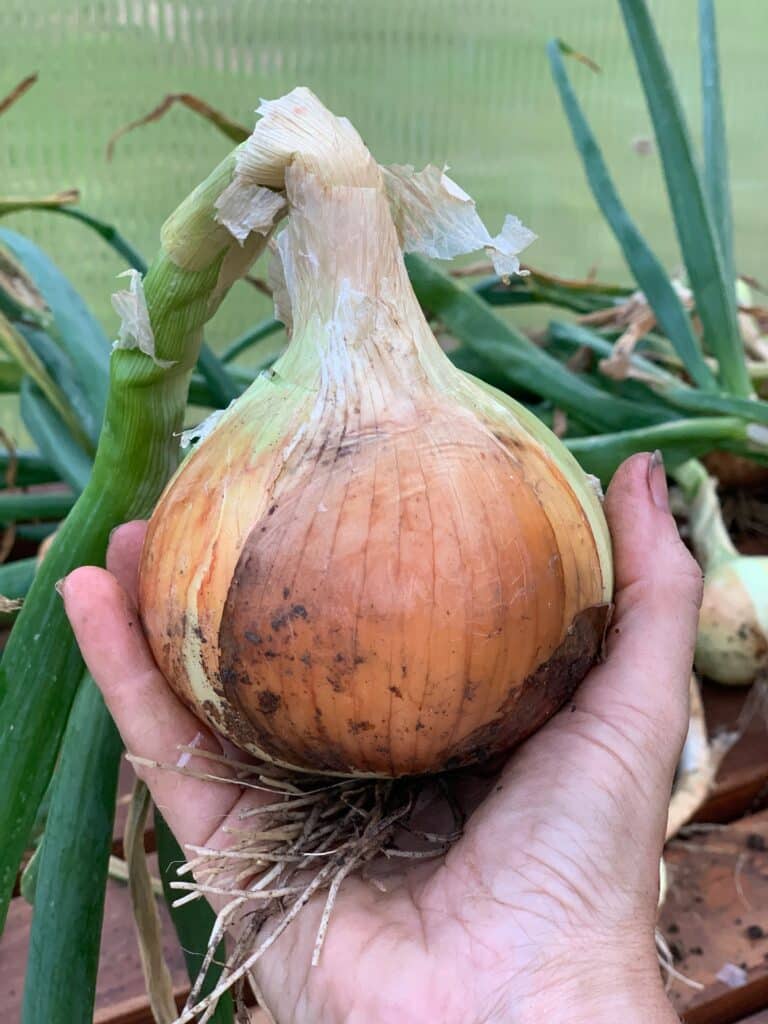
In the end, preventing onions from bolting can be a moving target. You can’t prevent temperature fluctuations or weather anomalies, but you can stack the odds more in your favor.
To find out how to do that in your garden, embrace testing what works for you and your garden. Always keep testing and learning as you go because no two seasons are alike. Remember, even the best gardeners encounter bolting onions, so know that it happens to us all! We’d just prefer to do what we can to make it happen less.
If you want to learn more about how to get started growing your own onions, click here to watch my Beginner’s Guide to Planting Onions.
Do you get overwhelmed with garden planning?

Subscribe here for my best tips to plan your garden in just 7 days -- all for FREE.
Plus, I'll send you my "In the Garden E-mail" on Fridays, periodic updates on garden resources relevant to you, and you'll receive access to my entire bank of free garden downloads!
You are also agreeing to our privacy policy.
